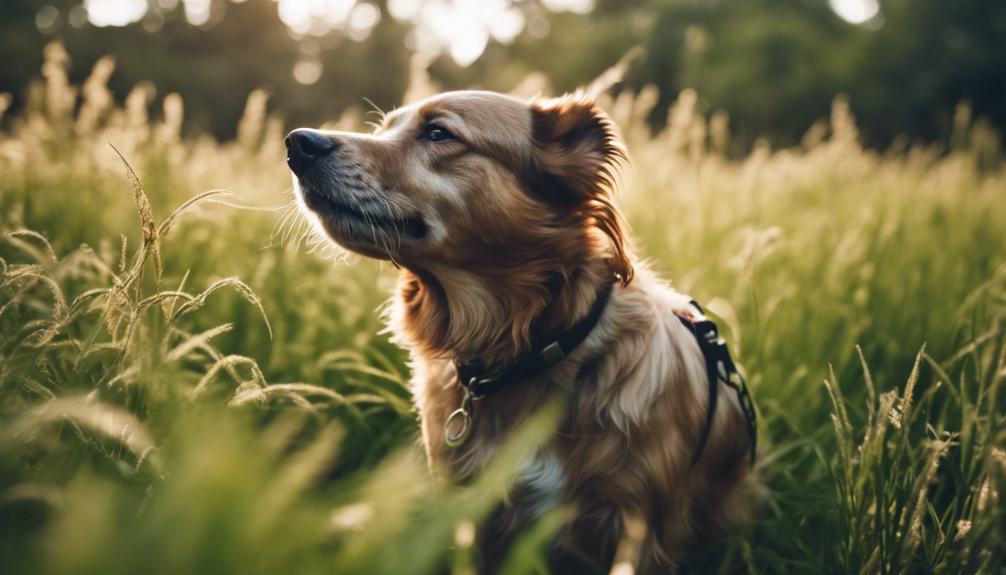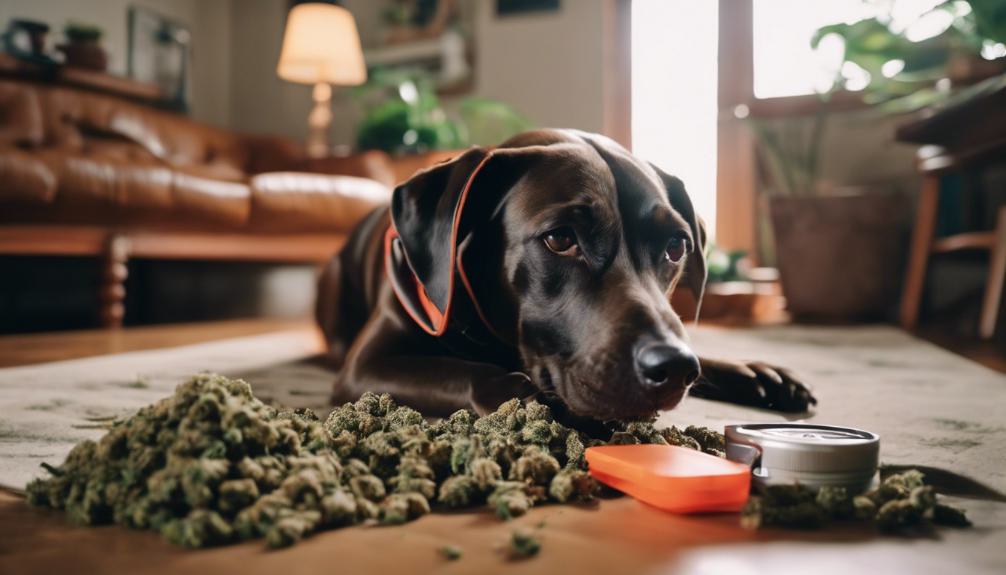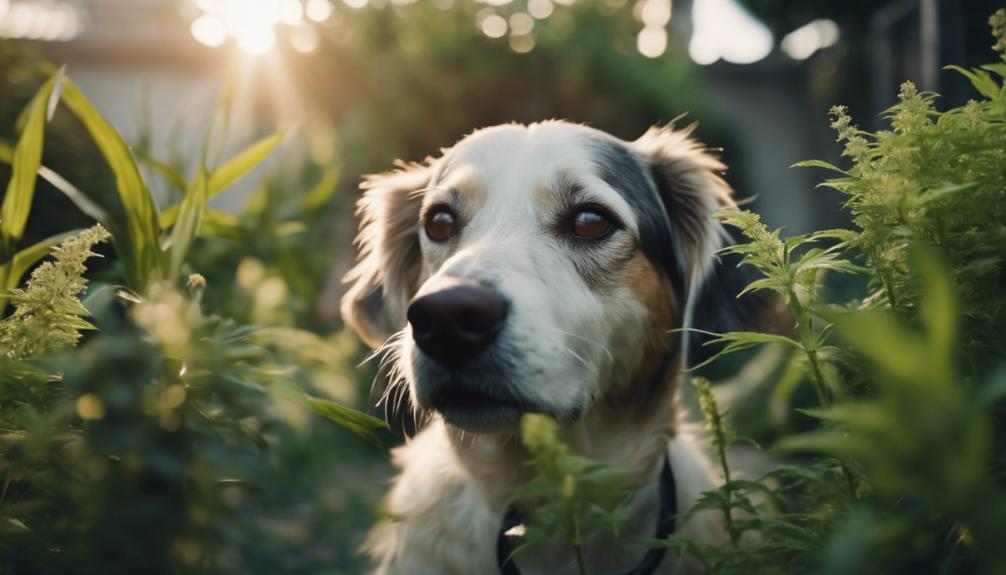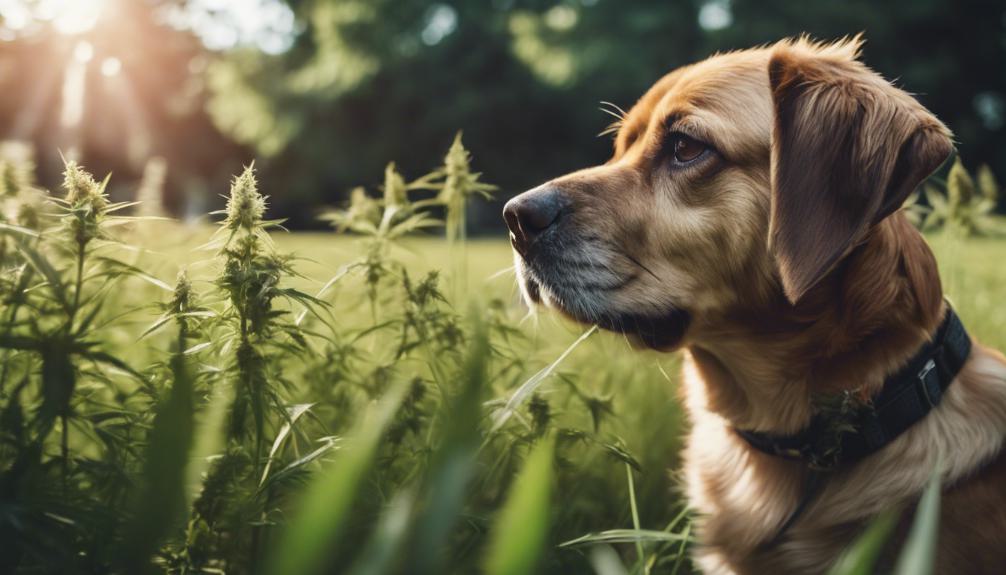How to Train Your Dog to Find Weed? Cannabis Detection Tips
If you wish to train your dog to find weed, begin with selecting a toy that can hold the scent well. Name this toy for easy recognition. Acquaint the weed scent gradually, commencing with a familiar one. Reward your dog for displaying interest and stimulate active searching. Practice concealing scented toys in various places to enhance tracking skills. Utilize clear verbal cues like ‘Find weed’ and consistently reward correct responses. For more effective training, follow the steps outlined in scent acquaintance, rewarding interest, hiding practice, and using verbal cues. More tips await on enhancing your dog’s scent detection skills.
Choosing the Right Toy
Select a toy for your dog that can securely contain the substance you’re training them to find. It’s essential that this toy can hold the scent well, to associate it clearly with the target scent during training.
Name the toy to help your dog distinguish it from others. During play, instruct your dog to find this specific toy, reinforcing their ability to connect the scent with the toy.
Replace the scent-carrying toy with a clean one regularly to keep strengthening your dog’s scent detection skills. Regular practice is key to helping your dog consistently recognize the target scent.
Introducing the Weed Scent
To effectively train your dog to recognize the weed scent, place the substance in a container with a familiar scent. This technique helps your dog link the specific smell with weed, simplifying identification in future training. Choose a scent your dog knows well and can distinguish from others. Introduce a ball that contains a trace of the actual substance to strengthen the scent-object association. Here’s a concise table summarizing the essential steps for training your dog with the weed scent:
| Key Points |
|---|
| Store weed with familiar scent |
| Introduce ball with trace of weed |
| Select a recognizable scent |
| Link scent with object |
| Progress to using real weed |
This method ensures that your dog will become proficient in identifying weed by its scent, using simple and direct training techniques.
Rewarding Interest in the Scent

Use a toy that holds the scent to capture your dog’s interest in weed detection. Reward your dog when it shows curiosity about the weed scent.
Encourage your dog to actively search for the weed-scented toy. Provide positive reinforcement such as treats or praise when your dog engages with the scent.
Consistently praise and reward your dog for focusing on the weed scent, reinforcing this desired behavior. By associating the weed scent with positive experiences, you train your dog to recognize and seek out the scent effectively.
This method reinforces the learning process, making the training both enjoyable and successful.
Hiding and Finding Practice
Practice hiding scented toys in various places to improve your dog’s tracking skills. Choose different locations and settings to make the training engaging.
Use a long lead line to control and direct your dog during the search. Watch your dog’s body language carefully as they sniff out the scent; small changes may show they’re close.
Hold regular training sessions to develop your dog’s skill in locating scents effectively. By frequently practicing in different environments and using the lead line for guidance, your dog will become skilled at detecting scents.
Using Verbal Cues

After honing your dog’s tracking skills with hide-and-seek games, now use clear, concise verbal cues like ‘Find weed‘ to improve their search abilities.
When training, choose short, straightforward commands to prevent confusion. Always reward your dog with praise or treats for correctly following the command ‘Find weed’.
To help your dog adapt, practice this cue in different places. Consistency and patience in your training approach will help your dog learn effectively.
Consistent Training Sessions
Consistent training is essential for your dog to learn how to detect weed effectively. Regular sessions help your dog remember the scent of weed and react correctly. Keep your training routine steady to ensure your dog stays skilled in identifying weed.
Repetition builds confidence and increases their detection abilities. A regular schedule keeps your dog focused and eager to learn. Remember, frequent and structured training sessions make your dog more reliable in detecting weed.
Positive Reinforcement Techniques

To improve your relationship with your dog during training for effective detection of substances, utilize treats, playtime, and encouraging words as reinforcement techniques.
- Give your dog a treat right after they detect the substance.
- Celebrate successful detections with a play session.
- Offer positive verbal feedback such as ‘good job’ to reinforce the behavior.
- Consistently reward your dog to solidify the link between their success in detection and positive rewards.
This approach helps your dog associate the act of detecting substances with enjoyable outcomes, making training both effective and enjoyable.
Monitoring Progress and Adjusting
Monitor your dog’s progress in scent detection tasks to effectively adjust your training approach. Keep track of how quickly your dog finds a weed-scented object, aiming for faster times with each session. Watch your dog’s body language and behavior to judge how well the training is going. If your dog seems confused or struggles, consider getting help from a professional.
Offering Consistent Practice

Train your dog regularly to boost their weed detection skills. Consistent practice is crucial for honing these abilities. Maximize training effectiveness by holding frequent sessions.
To enhance your dog’s skills, practice in varied environments and introduce different scenarios. Repetition is essential—ensure your dog repeatedly practices weed detection to stay sharp.
Frequently Asked Questions
How Do I Train My Dog to Detect Drugs?
To train your dog to detect drugs, commence with building interest through play, then teach fetch and a specific scent on a ball. Signal detection with a sit command and gradually shift to real drugs, rewarding success consistently for effective training.
How Do I Teach My Dog to Sniff and Find?
To choose your dog’s favorite scent and initiate, begin with a scent they enjoy. Conceal it and motivate them to search with enthusiasm. Rewards for successful finds will strengthen the behavior. Consistent practice will enhance their scent detection skills.
How Far Can a Dog Smell Weed From?
Dogs can smell weed from up to 20 feet away, influenced by factors like wind and scent concentration. Their exceptional olfactory system, especially in certain breeds, enables detection even at 100 feet.
How Do I Train My Dog to Search?
To train your dog to search effectively, initiate by teaching a specific scent association. Use consistent signals like sitting to show success. Gradually shift from scented toys to actual items. Reward with play or treats. Practice regularly in a calm environment.
Conclusion
Training your dog to detect weed involves clear steps and patience. This article provides practical guidance to develop your dog’s scent skills while keeping them mentally stimulated. Follow these steps consistently and maintain a positive approach. With commitment and regular practice, your dog will learn to locate weed on command.
Develop a training plan that suits both you and your dog. Choose specific times for training sessions to maintain consistency. Use treats or toys as rewards to keep your dog motivated. Introducing new scents gradually helps your dog learn without confusion.
Practice in different environments to enhance your dog’s adaptability. For example, start in a quiet room, then move to a yard, and eventually to more distracting settings. This variety helps reinforce learning.
Keep sessions short to prevent your dog from becoming overwhelmed or bored. Typically, 10 to 15 minutes per session is sufficient. Remember, the goal is to make training enjoyable and effective, not tedious.
Monitor your dog’s progress and adjust the difficulty level accordingly. If your dog masters a task easily, introduce more complex challenges to keep them engaged. Conversely, if they struggle, simplify the task to build confidence.
Training your dog to find weed isn’t just about enhancing their skills but also about strengthening your bond with them. Show patience, give clear commands, and consistently reward good behavior. Over time, your dog’s ability to detect weed will improve significantly, reflecting the effort and time invested in their training.

